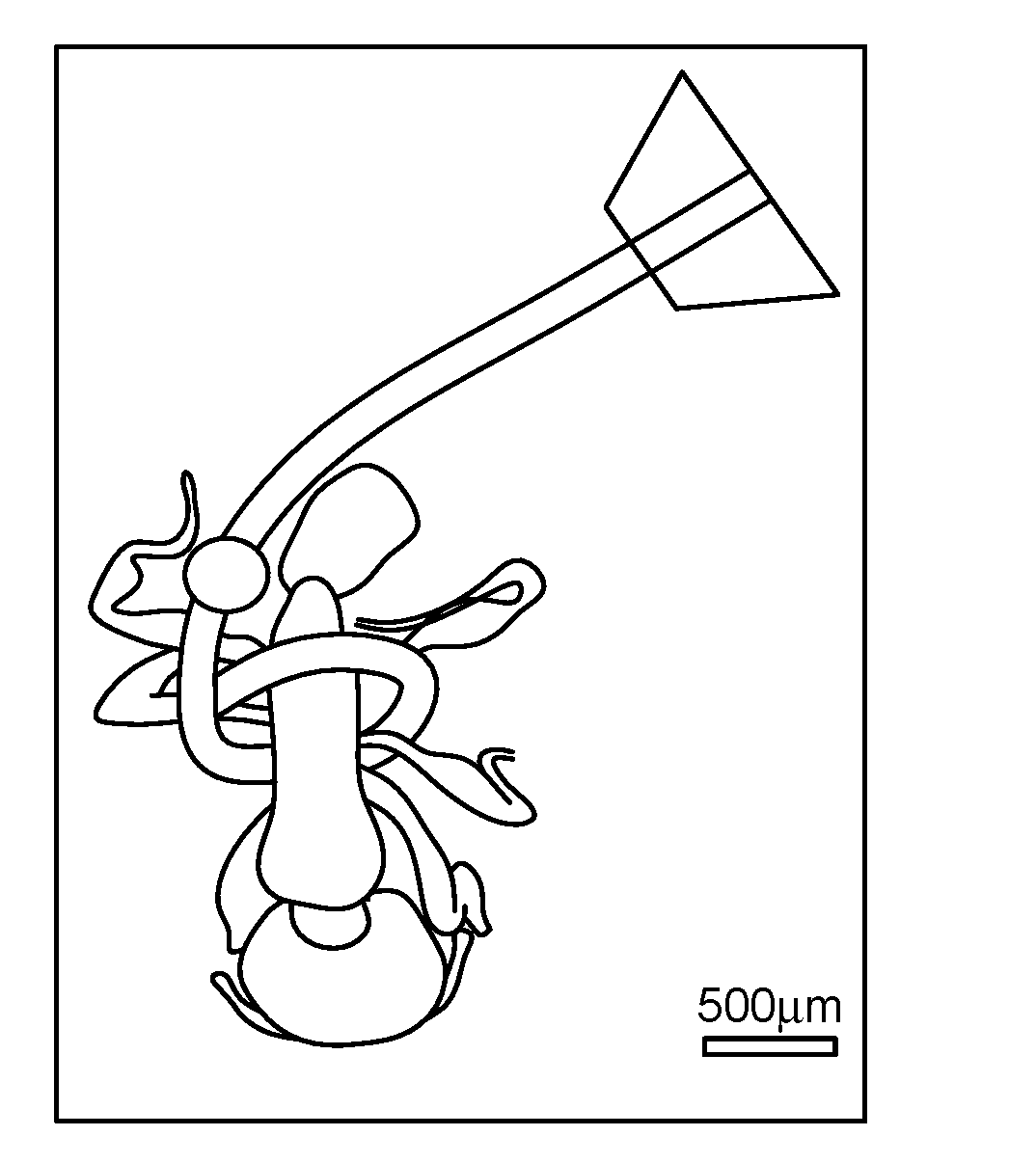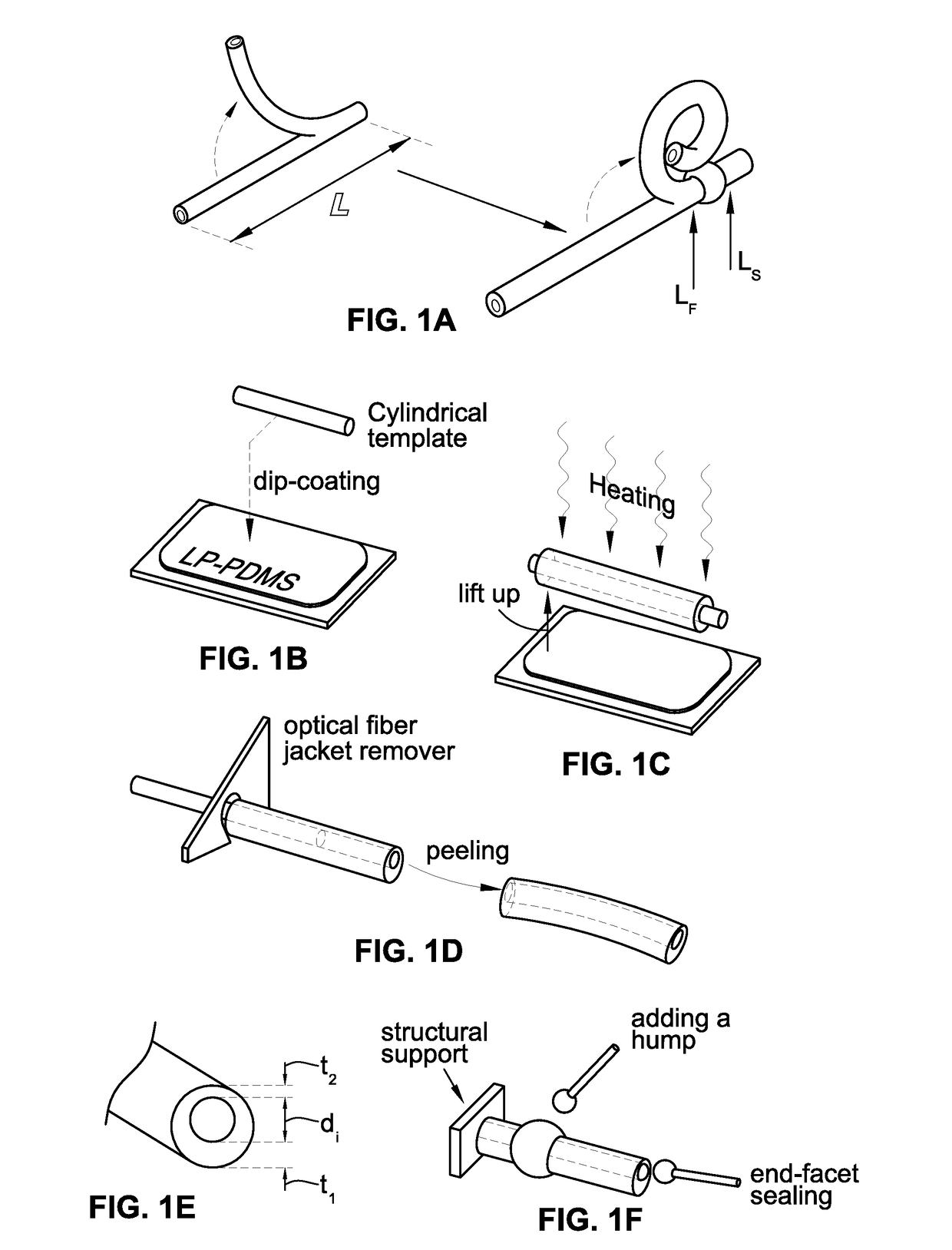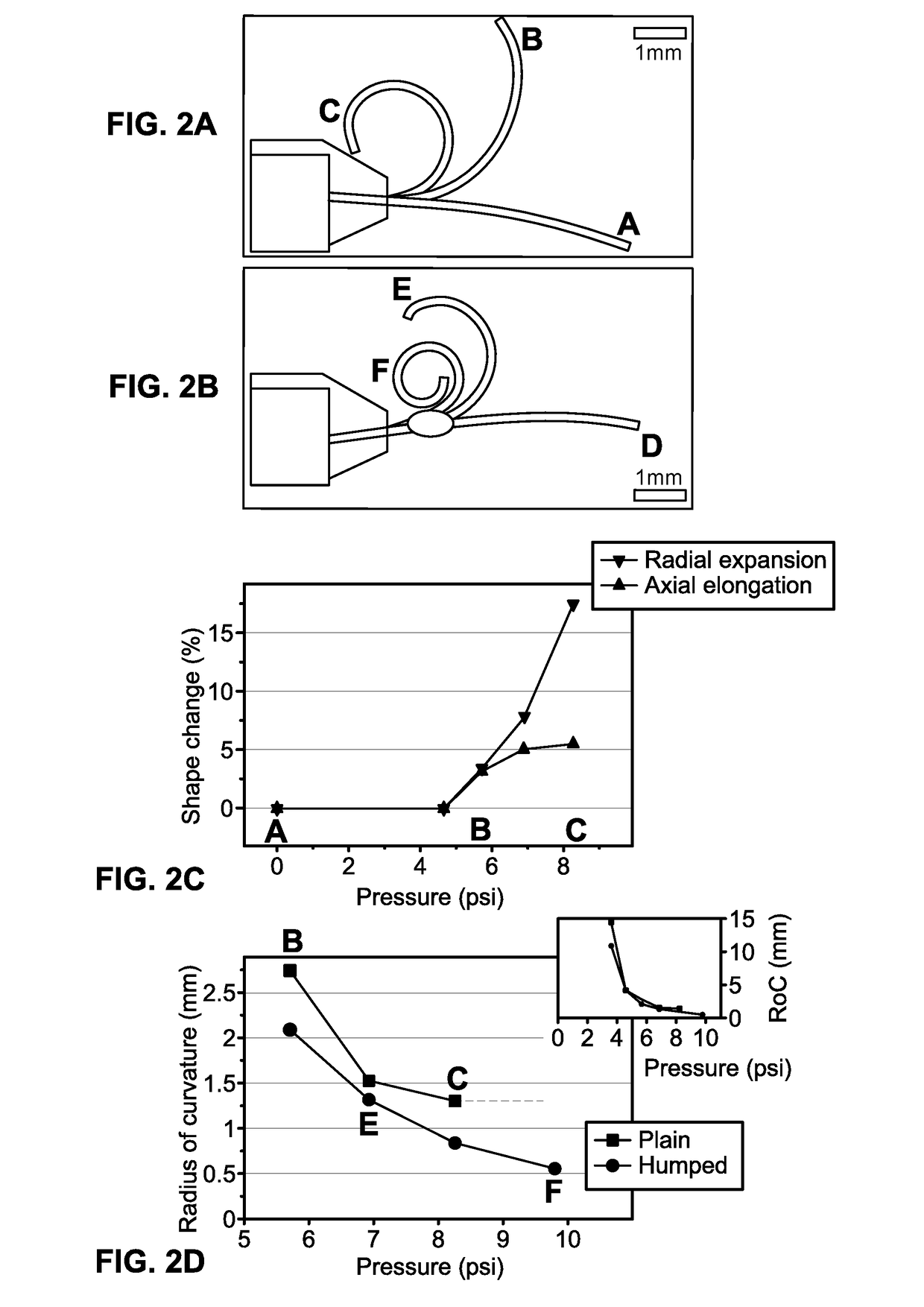Microrobotic tentacles with spiral bending capability based on shape-engineered elastomeric microtubes and methods of manufacturing same
a technology of elastomeric microtubes and microrobots, which is applied in the field of elastomer-based soft-robots, can solve the problems of many technical challenges, the current soft-lithographic microfabrication techniques, developed mainly for building planar elastomer structures with low aspect ratio patterns such as microchannels, are not optimal for constructing the three-dimensional cavity required for pneumatic actuation, and the effect of hermetically sealing
- Summary
- Abstract
- Description
- Claims
- Application Information
AI Technical Summary
Benefits of technology
Problems solved by technology
Method used
Image
Examples
Embodiment Construction
[0019]Turning now to the drawings, and initially to FIG. 1A, there is illustrated an embodiment of a microtube-type pneumatic soft-actuator that can be extended to microrobotic tentacles in accordance with principles of the present invention. However, as will be recognized by those skilled in the art from the following description, such embodiments are provided by way of example only, not by way of limitation, and that all alternative embodiments are reserved herein.
[0020]Spiraling tentacles are widely utilized in nature for grabbing and squeezing objects. While there have been continuous soft-robotic efforts to mimic such spiraling tentacles with pneumatic tube actuators, the life-like, multi-turn spiraling motion has been reproduced only by centimeter-scale tentacles so far. At millimeter and sub-millimeter scales, such tentacles could bend only up to a single-turn or less as shown in the first illustration of FIG. 1A.
[0021]However, recognizing that the bending of such small-scale...
PUM
| Property | Measurement | Unit |
|---|---|---|
| grabbing force | aaaaa | aaaaa |
| inner radius | aaaaa | aaaaa |
| inner diameter | aaaaa | aaaaa |
Abstract
Description
Claims
Application Information
 Login to View More
Login to View More - R&D
- Intellectual Property
- Life Sciences
- Materials
- Tech Scout
- Unparalleled Data Quality
- Higher Quality Content
- 60% Fewer Hallucinations
Browse by: Latest US Patents, China's latest patents, Technical Efficacy Thesaurus, Application Domain, Technology Topic, Popular Technical Reports.
© 2025 PatSnap. All rights reserved.Legal|Privacy policy|Modern Slavery Act Transparency Statement|Sitemap|About US| Contact US: help@patsnap.com



